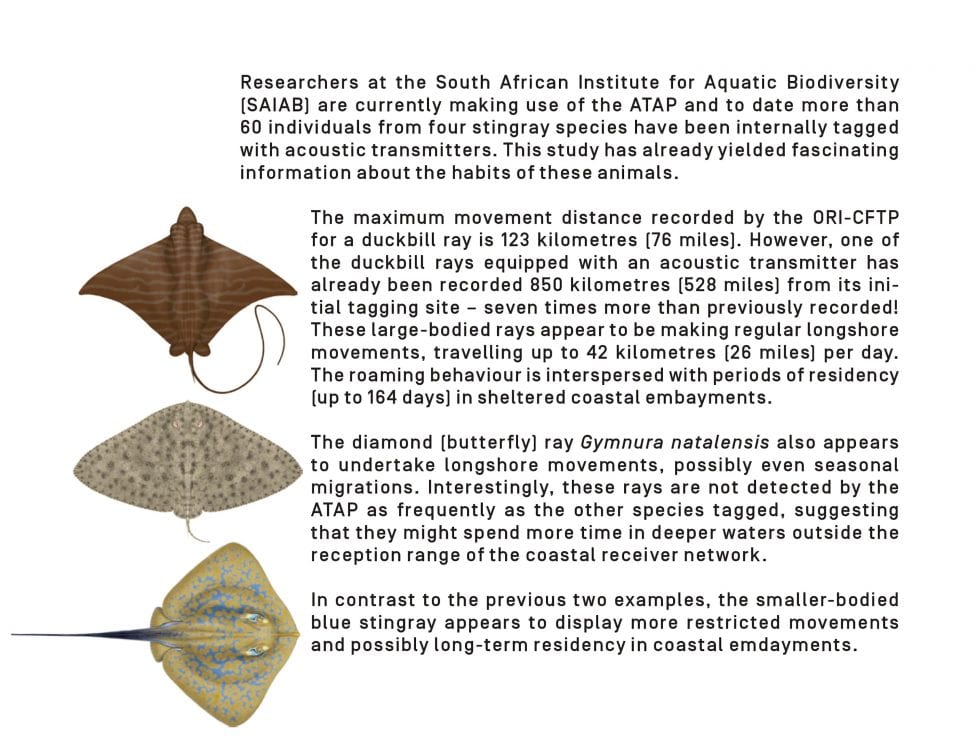The plight and flight of stingrays from southern Africa
The ATAP, a network of acoustic receivers around the southern African coastline, is providing invaluable information about the movements of little-known stingrays.
The seas around the southern tip of the African continent are well known for their biological diversity. This hotspot is home to approximately 185 species of cartilaginous fishes, or elasmobranchs, of which about 50 (27%) are endemic to the region and, in terms of their conservation status, more than 25% are regarded as threatened according to the IUCN’s Red List of Threatened Species. Sadly, a general lack of research attention has resulted in a dearth of knowledge about these species’ life history, which is typically characterised by slow growth, late maturity and low fecundity. These are traits that make sharks and rays vulnerable to overexploitation and other anthropogenic impacts.
The populations of many elasmobranchs in the region have declined as a result of targeted fishing and being taken as by-catch, raising concerns about their conservation status. In South Africa, the management of elasmobranch populations is further complicated by the fact that two different government departments are responsible: one is mandated to ensure the sustainability of shark fisheries, while the other regulates non-consumptive activities, such as shark cage diving, and the conservation of threatened and protected species.
Stingrays are probably the least studied of all southern Africa’s elasmobranch fauna, making conservation efforts very difficult. Approximately 25 species are known from the region, but good biological data have been collected for only one species, the blue stingray Dasyatis crysonota. Although stingrays make a negligible contribution to commercial fishery landings in South Africa, they are subjected to several other threats, including being caught in bather protection nets along the KwaZulu-Natal coastline and being taken as by-catch by inshore trawlers and demersal long-line fisheries. Moreover, many of the coastal stingray species are targeted by recreational beach anglers, especially during fishing competitions. Although these competitions adopt a catch-and-release approach, inappropriate handling could result in post-release mortality. In some cases, stingrays are targeted during a vulnerable time in their reproductive cycle and caught pregnant females are often observed aborting their young.
The Acoustic Tracking Array Platform (ATAP)
The ATAP covers thousands of kilometres of the Southern African coast. Scientists are able to use this collaborative array to paint a picture of how fish and shark species behave along the coastline to better manage and protect them in the future.

